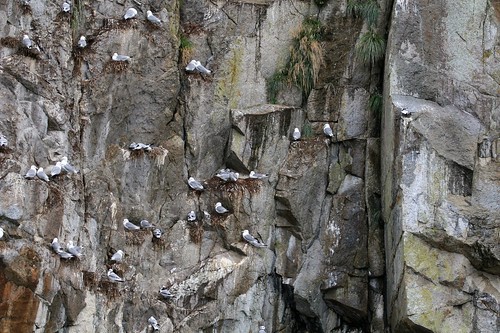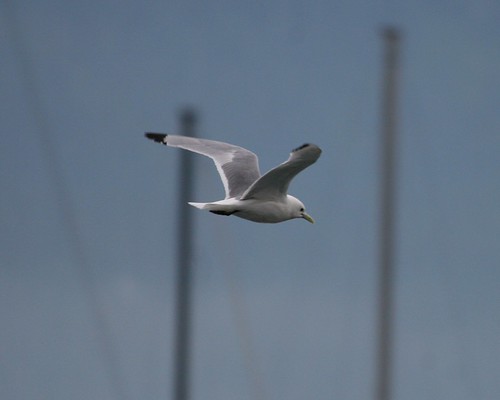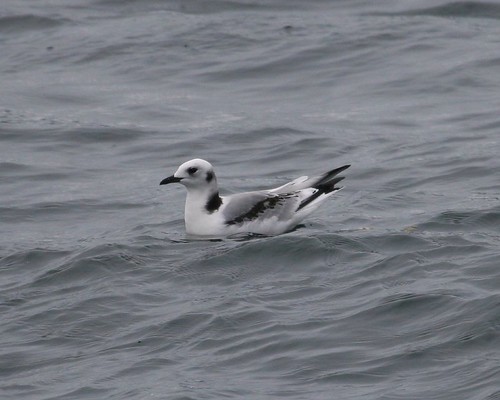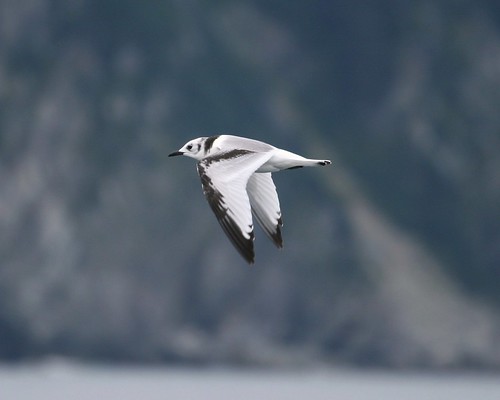It sure is hard following up that last post with something just as exciting. After a little deliberation, I decided to post some pictures of Black-legged Kittiwake. Yeah...I agree. Kittiwakes are not nearly as exciting as an Orca breaching the surface in pursuit of a meal (if you didn't see that post, you should check it out).
Kittiwake. Such a fancy name for what is otherwise just another gull. I had to research it as I wrote this post, but it turns out that their name comes from the call they make. This one is the Black-legged variety (instead of the Red-legged variety), and it was a life bird for me. When we headed to Alaska, I was pretty sure I would end up seeing a Black-legged Kittiwake without really trying. I was right.
On our boat trip out of Seward, almost every gull we saw was a Black-legged Kittiwake. The boat trip took us past a few nesting locations. These were essentially small rock islands. If you imagine steep mountains that were, except for the very tip, submerged by water, then you can imagine the appearance of these islands. Only the birds found any use out of them, using any tiny bit of horizontal surface as a place to roost or nest.
The adults were fairly plain looking. White underneath, gray on top, a yellow bill with no black or red marks on it, and, of course, black legs. The tips of the wings were black with no white.
The first year birds, to me, had a much more interesting appearance. Their bills were black instead of yellow, and there were several spots and lines of black mixed in with the gray and white coloration.




1 comment:
The last image in this series is just beautiful
Post a Comment